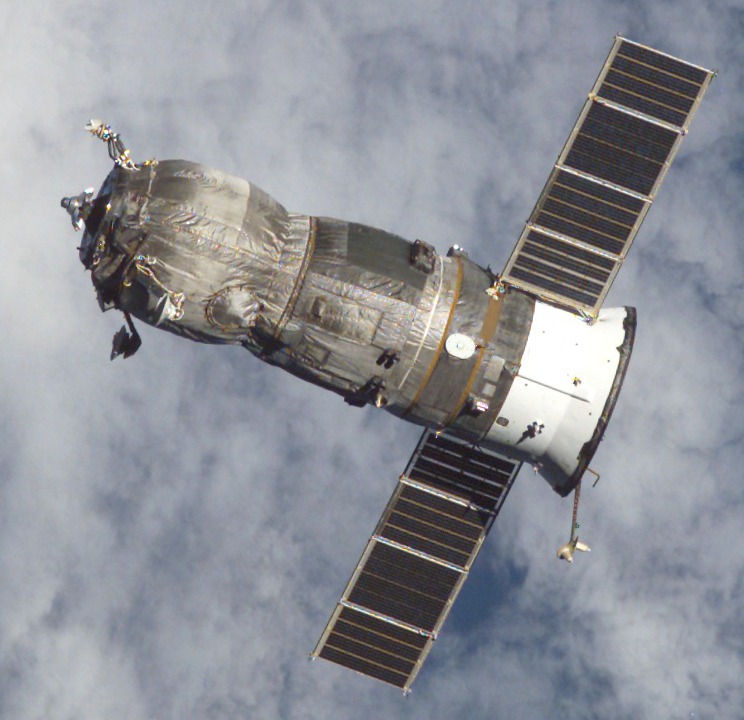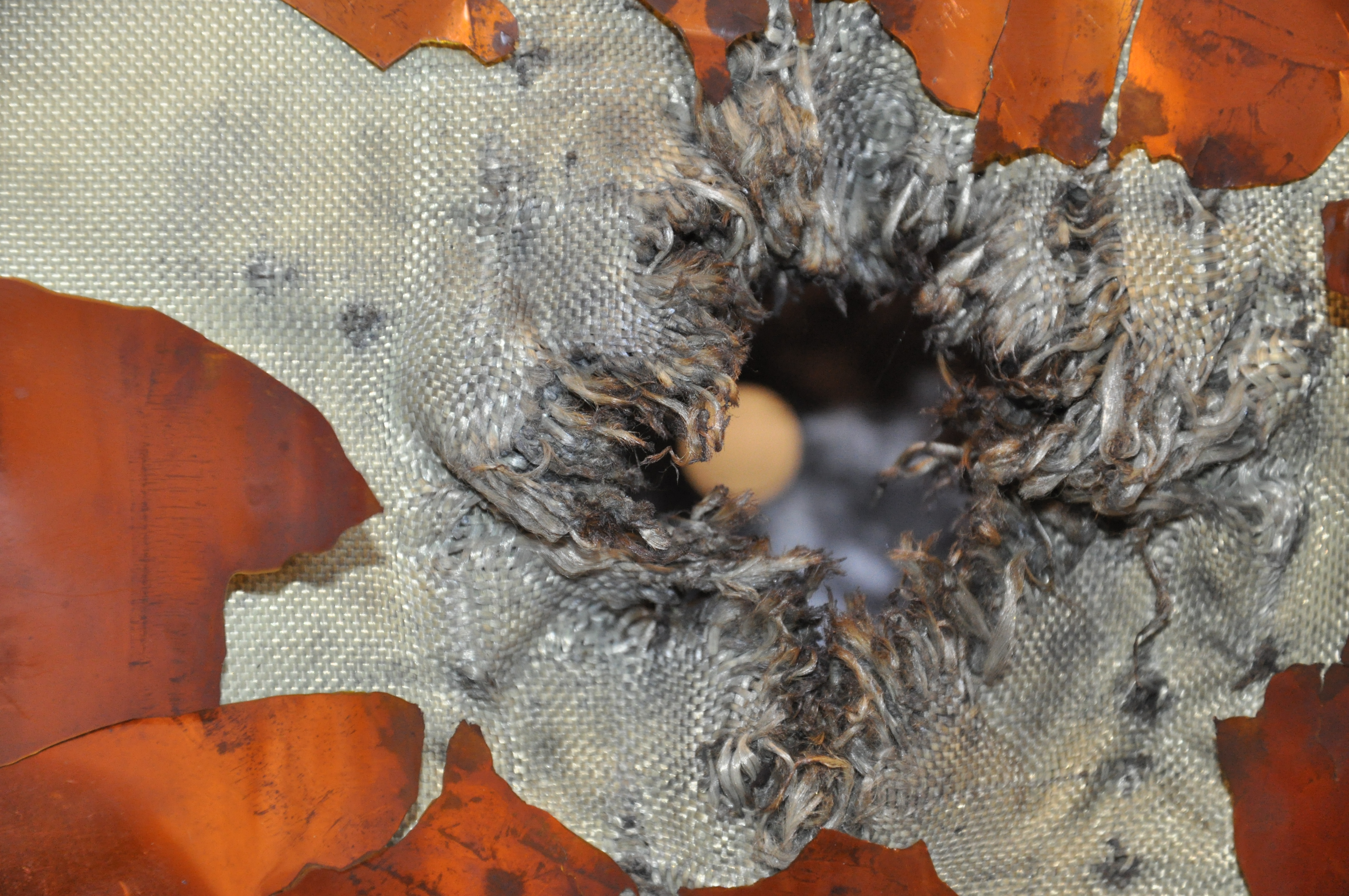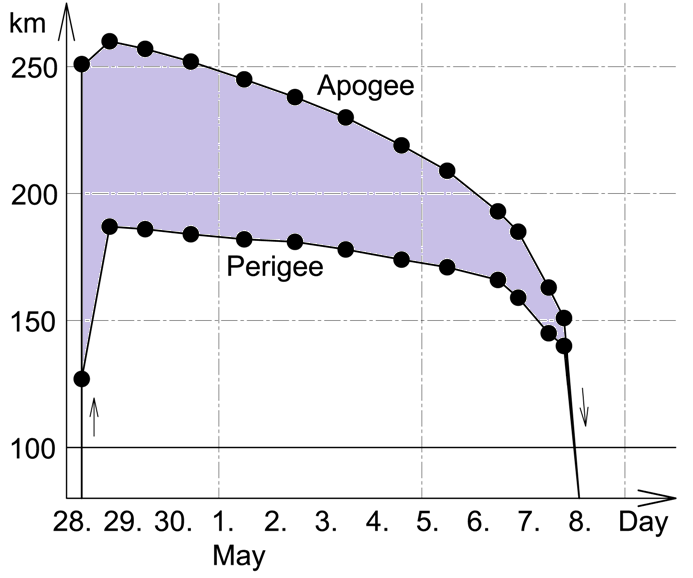|
Progress M
Progress-M (russian: Прогресс-М, GRAU indices 11F615A55 and 11F615A60), also known as Progress 7K-TGM, is a Russian, previously Soviet spacecraft which is used to resupply space stations. It is a variant of the Progress spacecraft, originally built in the late 1980s as a modernised version of the Progress 7K-TG spacecraft, using new systems developed for the Soyuz-T and Soyuz-TM spacecraft. The 11F61560 variant incorporated further modernisation, with digital flight control systems replacing the earlier analogue ones. The older 11F615A55 spacecraft outlived the newer 11F615A60. The final Progress-M, Progress-M-UM, was launched on 24 November 2021. The first forty three Progress-M spacecraft were used to resupply Mir, with subsequent spacecraft flying to the International Space Station. , eighty seven spacecraft have been launched, with sixty seven using the older model, and twenty using the newer version. Launches of the 11F615A60 are continuing. One 11F615A60, P ... [...More Info...] [...Related Items...] OR: [Wikipedia] [Google] [Baidu] |
Energia (corporation)
PAO S. P. Korolev Rocket and Space Corporation Energia (russian: Ракетно-космическая корпорация «Энергия» им. С. П. Королёва, Raketno-kosmicheskaya korporatsiya "Energiya" im. S. P. Korolyova), also known as RSC Energia (, RKK "Energiya"), is a Russian manufacturer of spacecraft and space station components. The company is the prime developer and contractor of the Russian crewed spaceflight program; it also owns a majority of Sea Launch. Its name is derived from Sergei Korolev, the first chief of its design bureau, and the Russian word for energy. Overview Energia is the largest company of the Russian space industry and one of its key players. It is responsible for all operations involving human spaceflight and is the lead developer of the Soyuz and Progress spacecraft, and the lead developer of the Russian end of the International Space Station (ISS). In the mid-2000s, the company employed 22,000–30,000 people. The e ... [...More Info...] [...Related Items...] OR: [Wikipedia] [Google] [Baidu] |
Soyuz-T
The Soyuz-T (russian: Союз-T, ''Union-T'') spacecraft was the third generation Soyuz spacecraft, in service for seven years from 1979 to 1986. The ''T'' stood for transport (, ). The revised spacecraft incorporated lessons learned from the Apollo Soyuz Test Project, Soyuz 7K-TM and Military Soyuz. The Soyuz-T was a major upgrade over previous Soyuz spacecraft, sporting solid-state electronics for the first time and a much more advanced onboard computer to help overcome the chronic docking problems that affected cosmonauts during space station missions. In addition, solar panels returned, allowing the Soyuz-T to fly up to 11 days independently as well as a redesigned propulsion system, the KTDU-426. Finally, it could at last carry three cosmonauts with pressure suits. Missions *Soyuz T-1 (uncrewed test, launched 1979) * Soyuz T-2 *Soyuz T-3 * Soyuz T-4 * Soyuz T-5 *Soyuz T-6 * Soyuz T-7 *Soyuz T-8 * Soyuz T-9 * Soyuz T-10-1 * Soyuz T-10 *Soyuz T-11 Soyuz T-11 was the ... [...More Info...] [...Related Items...] OR: [Wikipedia] [Google] [Baidu] |
SpaceX Dragon
American private space transportation company SpaceX has developed and produced several spacecraft named Dragon. The first family member, now referred to as Dragon 1, flew 23 cargo missions to the ISS between 2010 and 2020 before being retired. With this first version not designed for carrying astronauts, it was funded by NASA with $396 million awarded through the Commercial Orbital Transportation Services (COTS) program, with SpaceX being announced as a winner of the first round of funding on August 18, 2006. SpaceX developed its Dragon 2 spacecraft starting in 2014, with a cargo version and a crewed version. It entered service in 2019 with the Demo-1 flight, and performed its first flight with astronauts on May 30, 2020, during the Crew Dragon Demo-2 flight. SpaceX also investigated a version named Red Dragon for Mars exploration, but the project did not go forward. A version named Dragon XL Is proposed to provide Gateway Logistics Services to the Lunar Gateway. Nam ... [...More Info...] [...Related Items...] OR: [Wikipedia] [Google] [Baidu] |
Cygnus Spacecraft
Cygnus is an expendable American cargo spacecraft developed by Orbital Sciences Corporation and now manufactured and launched by Northrop Grumman Space Systems as part of NASA's Commercial Resupply Services (CRS) program. It is launched by Northrop Grumman's Antares rocket or ULA's Atlas V and is designed to transport supplies to the International Space Station (ISS) following the retirement of the American Space Shuttle. Since August 2000, ISS resupply missions have been regularly flown by the Russian Progress spacecraft, as well as by the European Automated Transfer Vehicle, and the Japanese H-II Transfer Vehicle. With the Cygnus spacecraft and the SpaceX Dragon, NASA seeks to increase its partnerships with domestic commercial aviation and aeronautics industry. ''Cygnus'' is the Latinized Greek word for swan and a northern constellation. Development With Rocketplane Kistler unable to meet funding obligations for its K-1 launch vehicle under the terms of the COTS a ... [...More Info...] [...Related Items...] OR: [Wikipedia] [Google] [Baidu] |
Automated Transfer Vehicle
The Automated Transfer Vehicle, originally Ariane Transfer Vehicle or ATV, was an expendable cargo spacecraft developed by the European Space Agency (ESA), used for space cargo transport in 2008–2015. The ATV design was launched to orbit five times, exclusively by the Ariane 5 heavy-lift launch vehicle. It effectively was a larger European counterpart to the Russian Progress cargo spacecraft for carrying upmass to a single destination—the International Space Station (ISS)—but with three times the capacity. The five ATVs were named after important European figures in science and engineering: ''Jules Verne'', ''Johannes Kepler'', '' Edoardo Amaldi'', ''Albert Einstein'', and '' Georges Lemaître''. Following several delays to the program, the first of these was launched in March 2008. These ATVs performed supply missions to the ISS, transporting various payloads such as propellant, water, air, food, and scientific research equipment; ATVs also reboosted the station into ... [...More Info...] [...Related Items...] OR: [Wikipedia] [Google] [Baidu] |
Comparison Of Orbital Spacecraft
Comparison or comparing is the act of evaluating two or more things by determining the relevant, comparable characteristics of each thing, and then determining which characteristics of each are similar to the other, which are different, and to what degree. Where characteristics are different, the differences may then be evaluated to determine which thing is best suited for a particular purpose. The description of similarities and differences found between the two things is also called a comparison. Comparison can take many distinct forms, varying by field: To compare things, they must have characteristics that are similar enough in relevant ways to merit comparison. If two things are too different to compare in a useful way, an attempt to compare them is colloquially referred to in English as "comparing apples and oranges." Comparison is widely used in society, in science and in the arts. General usage Comparison is a natural activity, which even animals engage in when dec ... [...More Info...] [...Related Items...] OR: [Wikipedia] [Google] [Baidu] |
Attitude Control
Attitude control is the process of controlling the orientation of an aerospace vehicle with respect to an inertial frame of reference or another entity such as the celestial sphere, certain fields, and nearby objects, etc. Controlling vehicle attitude requires sensors to measure vehicle orientation, actuators to apply the torques needed to orient the vehicle to a desired attitude, and algorithms to command the actuators based on (1) sensor measurements of the current attitude and (2) specification of a desired attitude. The integrated field that studies the combination of sensors, actuators and algorithms is called guidance, navigation and control (GNC). Aircraft attitude control An aircraft's attitude is stabilized in three directions: '' yaw'', nose left or right about an axis running up and down; ''pitch'', nose up or down about an axis running from wing to wing; and ''roll'', rotation about an axis running from nose to tail. Elevators (moving flaps on the horizontal t ... [...More Info...] [...Related Items...] OR: [Wikipedia] [Google] [Baidu] |
VDU (Mir)
{{disambig ...
VDU may stand for: * VDU, a self contained attitude control thruster block (russian: ВДУ, link=no) on space station Mir *Federation of Independents (german: Verband der Unabhängigen, link=no), German nationalist political party in Austria active from 1949 to 1955 * Vacuum distillation unit, a processing unit in an oil refinery *Video display unit, a synonym for a type of computer monitor *Visual display unit, an electronic visual display *Vytautas Magnus University ( lt, Vytauto Didžiojo Universitetas, link=no) in Kaunas, Lithuania See also *Vudu Vudu is an American digital video store and streaming service owned by Fandango Media, a joint-venture between NBCUniversal and Warner Bros. Discovery. The company offers transactional video on demand rentals and digital purchases of fi ... [...More Info...] [...Related Items...] OR: [Wikipedia] [Google] [Baidu] |
Progress M-38
Progress M-38 () was a Russian unmanned Progress cargo spacecraft, which was launched in March 1998 to resupply the Mir space station. Launch Progress M-38 launched on 14 March 1998 from the Baikonur Cosmodrome in Kazakhstan Kazakhstan, officially the Republic of Kazakhstan, is a transcontinental country located mainly in Central Asia and partly in Eastern Europe. It borders Russia to the north and west, China to the east, Kyrgyzstan to the southeast, Uzbeki .... It used a Soyuz-U rocket. Docking Progress M-38 docked with the aft port of the Kvant-1 module of Mir on 17 March 1998 at 00:31:17 UTC, and was undocked on 15 May 1998 at 18:43:54 UTC. Decay It remained in orbit until 15 May 1998, when it was deorbited. The deorbit burn occurred at 21:39:00 UTC, with the mission ending at 22:26 UTC. See also * 1998 in spaceflight * List of Progress missions * List of uncrewed spaceflights to Mir References Progress (spacecraft) missions 1998 in Kazakhstan ... [...More Info...] [...Related Items...] OR: [Wikipedia] [Google] [Baidu] |
Progress M-14
Progress M-14 (), was a Russian uncrewed Progress cargo spacecraft which was launched in 1992 to resupply the Mir space station. The spacecraft was modified to transport the first VDU propulsion unit to Mir. Progress M-14 also carried the sixth VBK-Raduga capsule, which was recovered after the flight. Launch Progress M-14 launched on 15 August 1992 from the Baikonur Cosmodrome in Kazakhstan. It used a Soyuz-U2 rocket. Docking Progress M-14 docked with Mir on 18 August 1992 at 00:20:48 GMT. See also *1992 in spaceflight *List of Progress flights A ''list'' is any set of items in a row. List or lists may also refer to: People * List (surname) Organizations * List College, an undergraduate division of the Jewish Theological Seminary of America * SC Germania List, German rugby union ... * List of uncrewed spaceflights to Mir References {{Orbital launches in 1992 Progress (spacecraft) missions 1992 in spaceflight Spacecraft launched in 1992 1992 in Russia< ... [...More Info...] [...Related Items...] OR: [Wikipedia] [Google] [Baidu] |
Orbital Decay
Orbital decay is a gradual decrease of the distance between two orbiting bodies at their closest approach (the periapsis) over many orbital periods. These orbiting bodies can be a planet and its satellite, a star and any object orbiting it, or components of any binary system. If left unchecked, the decay eventually results in termination of the orbit when the smaller object strikes the surface of the primary; or for objects where the primary has an atmosphere, the smaller object burns, explodes, or otherwise breaks up in the larger object's atmosphere; or for objects where the primary is a star, ends with incineration by the star's radiation (such as for comets). Collisions of stellar-mass objects are usually accompanied by effects such as gamma-ray bursts and detectable gravitational waves. Orbital decay is caused by one or more mechanisms which absorb energy from the orbital motion, such as drag (physics), fluid friction, mass concentration (astronomy), gravitational an ... [...More Info...] [...Related Items...] OR: [Wikipedia] [Google] [Baidu] |
Progress M-27M
Progress M-27M (russian: Прогресс М-27М, italic=yes), identified by NASA as Progress 59P, was a Progress spacecraft used by Roscosmos in an unsuccessful attempt to resupply the International Space Station (ISS) in 2015. Launch Progress M-27M was the 27th Progress-M 11F615A60 spacecraft, with the serial number 427. It was built by RKK Energia and was operated by the Roscosmos. This was the second time the upgraded Soyuz-2.1a rocket was used for an ISS mission launch. The spacecraft was launched on 28 April 2015 at 07:09:50 UTC from the Baikonur Cosmodrome in Kazakhstan. Progress M-27M was launched with a planned six-hour rendezvous profile to the ISS. During the launch the spacecraft achieved low Earth orbit, but a malfunction occurred near the end of the upper stage burn shortly before the separation of the Progress spacecraft, generating a debris field and leaving the spacecraft spinning and unable to be fully controlled. The spacecraft was deemed to be a total l ... [...More Info...] [...Related Items...] OR: [Wikipedia] [Google] [Baidu] |


.jpg)

